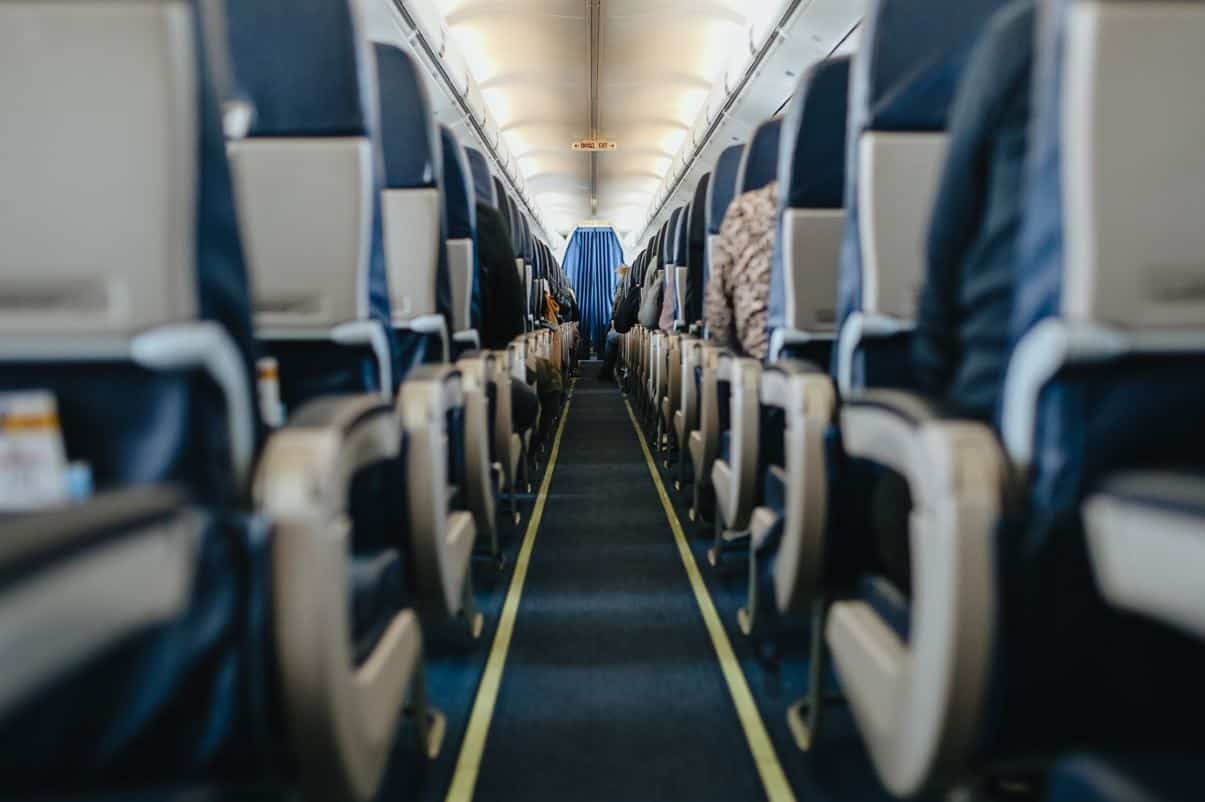There are plenty of things to stress about in everyday life, and flying is no different. Experts estimate that 25 million American adults have a fear of flying. The reasons behind the fears and the reactions individuals display in response to those fears can vary greatly. Luckily there are actions one can take to manage and even overcome a fear of flying while on board a plane. One such measure is to choose the correct seat when booking a flight. Some seats are better than others depending on the reason behind the fear, and that is what we will discuss here.
Why Are You Nervous?
In order to choose the best seat, nervous passengers first need to identify what exactly is causing their anxiety. While that is sometimes easier said than done, knowing the root cause of a fear can be helpful.
Airline passengers can be apprehensive for any number of reasons. Worries range from anxiety about getting sick during the flight to the worst-possible-case doomsday scenario, and everything in between. Some of the more common reasons why people are anxious about flying include:

- Fear that the plane will crash
- Nervousness about take-off and landing
- Germs or sickness being spread onboard
- Dislike of turbulence
- Fear of heights
- Claustrophobia
The Safest Seat
Passengers who worry that something catastrophic will go wrong during the flight either mid-air or during take-off or landing should know where the safest seat is. The exact spot will vary by plane size and type, and can also change based on which type of accident we are talking about. But in general, experts agree that the middle seats in the back of the plane are safest.

Best Seat For Germ-Free Travel
Anyone who has flown in the past 3 years will know that there are plenty of precautions they can take to reduce the risk of getting sick on a plane. We’ve all masked up, sanitized every inch of our seating area, and distanced ourselves from fellow passengers. Now that many airlines have dropped mask requirements, passengers who are nervous about getting sick might feel more vulnerable. If you want to avoid germs onboard a plane, studies have shown that window seats have the lowest rates of exposure.

The Smoothest Seats
So many airline passengers tighten their grip when turbulence hits. While some bouts of turbulence can be nerve-racking or even uncomfortable, it is rare that it becomes severe. Flyers who want to ensure a smooth ride should select seats in the rows directly over the wings. Because the wings provide the plane’s stability, the seats closest to them will offer a smoother ride. If those seats are not available, the next best place is towards the front of the plane. It is best to avoid the back if turbulence will cause you distress, as it is the most susceptible to bumpiness.

Where To Sit If you Have A Fear Of Heights
Being fearful of heights is a very common phobia. While not all people who are afraid of heights have a problem flying, many do. Unfortunately for those people, there is no getting around the need for the plane to fly high. Passengers who are nervous about being so high in the sky should choose aisle seats or rows in the middle of the plane where views out the window are obscured. Another tactic is to stay focused on a book, screen, or other distractions to avoid thinking about how high up you are.

Best Seats To Avoid Claustrophobia
If being packed in a plane with lots of other people gives you anxiety you are not alone. So many travelers struggle with this fear, so the best way to cope is to find a seat with plenty of space. The least crowded section of the plane is first or business class. But if upgraded flying isn’t in your budget there are still options. Try sitting in an aisle seat in an exit row towards the front of the plane. These seats typically have more legroom, are easier to get out of, and also reduce the number of other passengers in your view, making the space feel less crowded.


